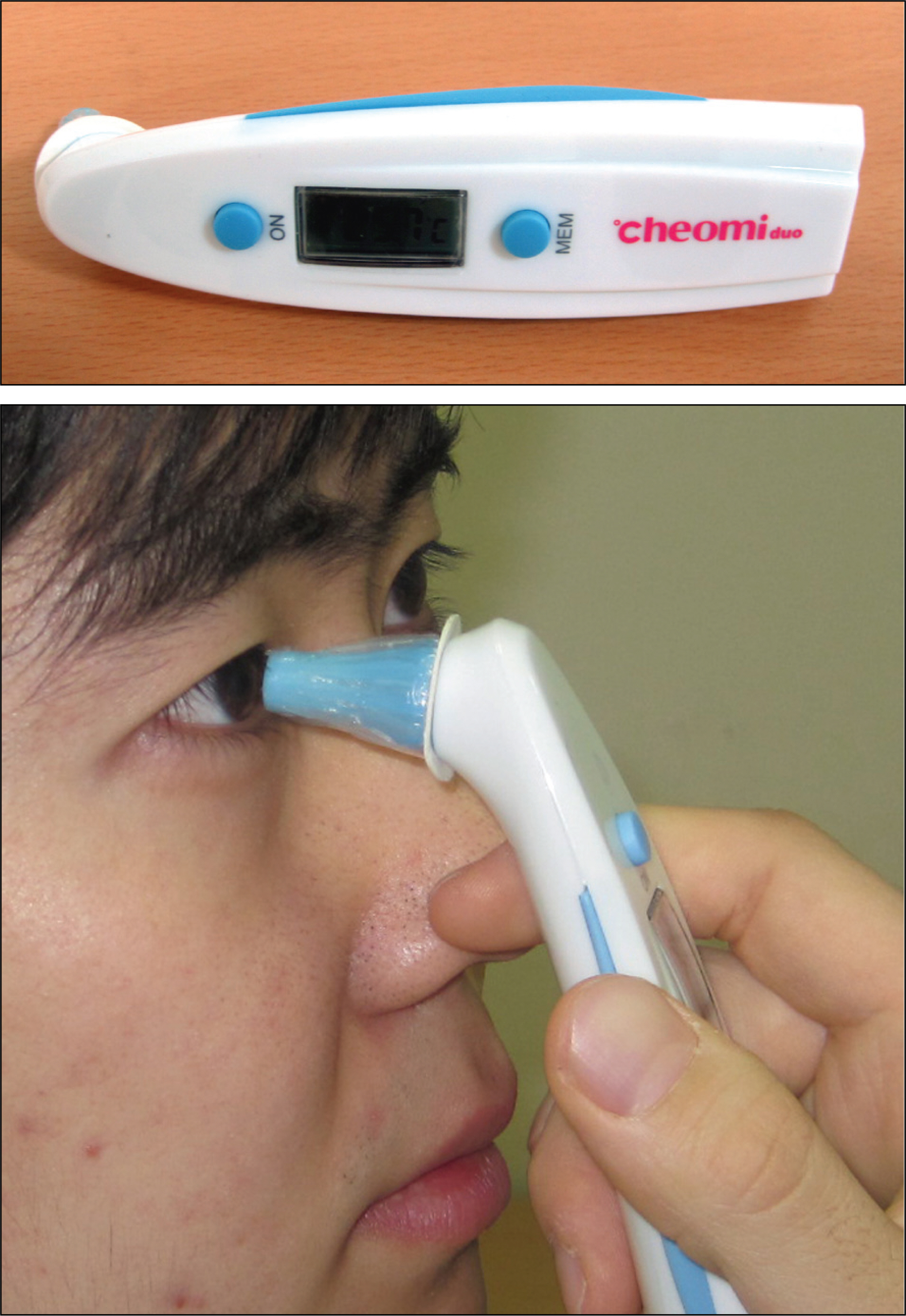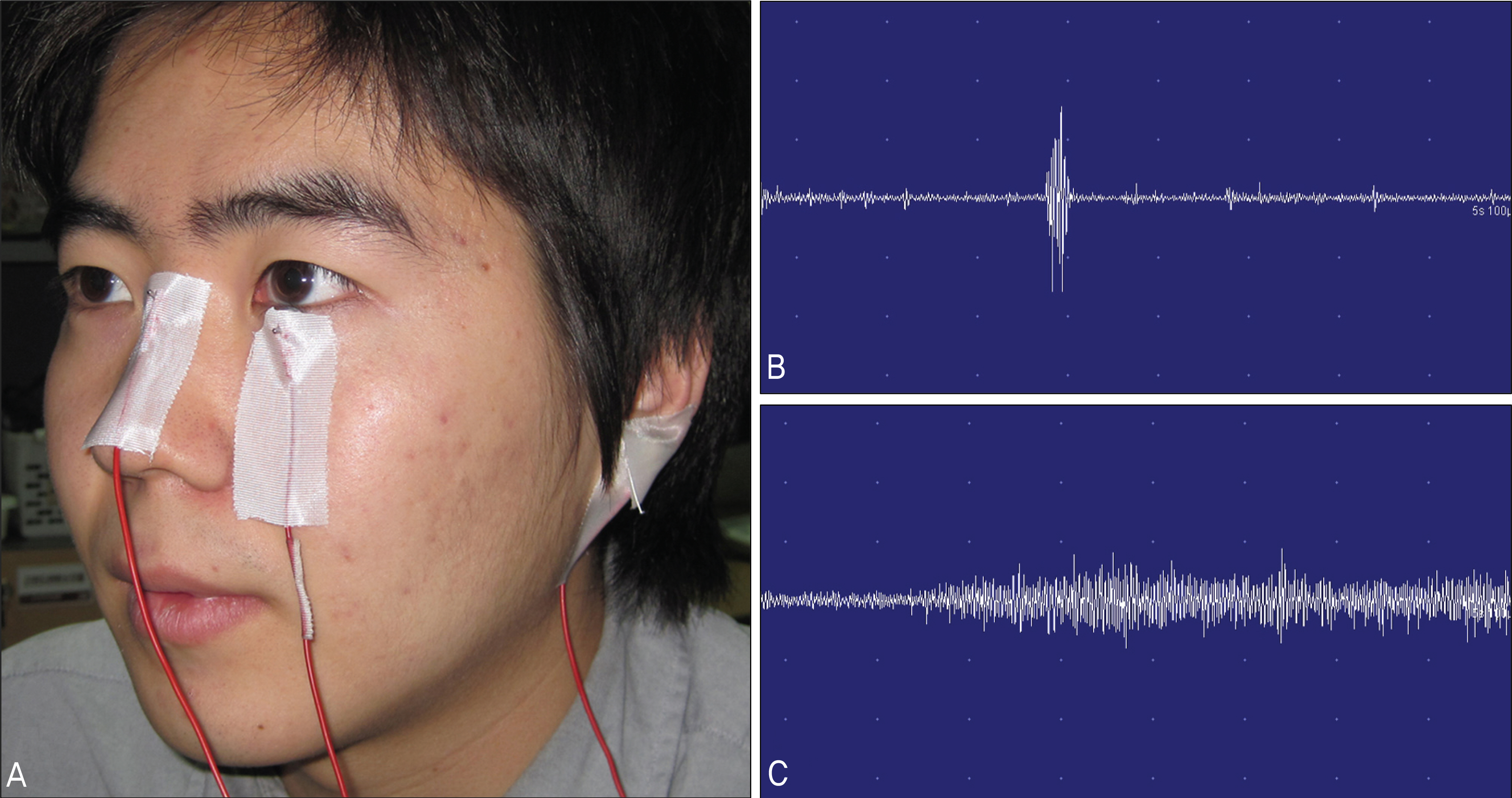J Korean Ophthalmol Soc.
2010 Oct;51(10):1327-1332.
The Objective Methods to Evaluate Ocular Fatigue Associated With Computer Work
- Affiliations
-
- 1The Association for Research in Visual Function, Korea University College of Medicine, Seoul, Korea. crisim@korea.ac.kr
- 2Department of Ophthalmology, Korea University College of Medicine, Seoul, Korea.
- 3Department of Ophthalmology, Gachon University Gil Medical Center, Incheon, Korea.
Abstract
- PURPOSE
To develop methods for the objective measurement of ocular fatigue.
METHODS
Fifteen patients were enrolled in the present study. Subjects performed visual tasks on a computer for one hour. A survey of ocular fatigue was conducted with a questionnaire. Tear break-up time, blinking rate, ocular protection index, conjunctival injection, maximal blinking interval, temperature of the ocular surface, and visual evoked potential were evaluated before and immediately after the task. Surface electromyography of the orbicularis oculi muscle was performed before and during the task.
RESULTS
The survey showed increases in subjective ocular fatigue in all subjects. Tear break-up time, ocular protection index and maximal blinking interval decreased, while temperature of the ocular surface increased after the task. Conjunctival injection showed a tendency to increase. Electromyography, and visual evoked potential did not change significantly.
CONCLUSIONS
In the present study, tear break-up time, ocular protection index, maximal blinking interval, and temperature of the ocular surface changed as ocular fatigue increased. Therefore, these measures can be objectively used for the evaluation of ocular fatigue.
Keyword
MeSH Terms
Figure
Reference
-
References
1. Scheiman M. Accommodative and binocular vision disorders associated with video display terminals: diagnosis and management issues. J Am Optom Assoc. 1996; 67:531–9.2. Thomson WD. Eye problems and visual display terminals–the facts and the fallacies. Ophthalmic Physiol Opt. 1998; 18:111–9.
Article3. Schlote T, Kadner G, Freudenthaler N. Marked reduction and distinct patterns of eye blinking in patients with moderately dry eyes during video display terminal use. Graefes Arch Clin Exp Ophthalmol. 2004; 242:306–12.
Article4. Ames SL, Wolffsohn JS, McBrien NA. The Development of a Symptom Questionnaire for Assessing Virtual Reality Viewing Using a Head-Mounted Display. Optom Vis Sci. 2005; 82:168–76.
Article5. Schulze MM, Jones DA, Simpson TL. The Development of Validated Bulbar Redness Grading Scales. Optom Vis Sci. 2007; 84:976–83.
Article6. Cella D, Peterman A, Passik S, et al. Progress toward guidelines for the management of fatigue. Oncology. 1998; 12:369–77.7. Moncrieff G, Fletcher J. Tiredness. BMJ. 2007; 334:1221.
Article8. Toda I, Fujishima H, Tsubota K. Ocular fatigue is the major symptom of dry eye. Acta Ophthalmol. 1993; 71:347–52.
Article9. Himebaugh NL, Begley CG, Bradley A, Wilkinson JA. Blinking and tear breakup during four visual tasks. Optom Vis Sci. 2009; 86:E106–14.
Article10. Kim JS, Cho KJ, Song JS. Influences of computer works on blink rate and ocular dryness in adolescents. J Korean Ophthalmol Soc. 2007; 48:1466–72.
Article11. Ousler GW, Hagberg KW, Schindelar M, et al. The Ocular Protection Index. Cornea. 2008; 27:509–13.
Article12. Galassi F, Giambene B, Corvi A, Falaschi G. Evaluation of ocular surface temperature and retrobulbar haemodynamics by infrared thermography and colour Doppler imaging in patients with glaucoma. Br J Ophthalmol. 2007; 91:878–81.
Article13. Sodi A, Giambene B, Falaschi G, et al. Ocular surface temperature in central retinal vein occlusion: preliminary data. Eur J Ophthalmol. 2007; 17:755–9.
Article14. Sodi A, Giambene B, Miranda P, et al. Ocular surface temperature in diabetic retinopathy: a pilot study by infrared thermography. Eur J Ophthalmol. 2009; 19:1004–8.
Article15. Kim JH, Jeong JH, Ha HS, et al. Relationship Between the Ocular Surface Temperature and the Nasal Predominance in Pterygium. J Korean Ophthalmol Soc. 2008; 49:732–6.
Article16. Murata K, Araki S, Yokoyama K, et al. Accumulation of VDT work-related visual fatigue assessed by visual evoked potential, near point distance and critical flicker fusion. Ind Health. 1996; 34:61–9.
Article17. Nahar NK, Sheedy JE, Hayes J, Tai YC. Objective measurements of lower-level visual stress. Optom Vis Sci. 2007; 84:620–9.
Article
- Full Text Links
- Actions
-
Cited
- CITED
-
- Close
- Share
- Similar articles
-
- The Changes of Corneal and Ocular High-Order Aberrations before and after Playing Computer Games
- The Influence of the Vertical Location of VDT Screen on the Ocular Dryness
- The Effect on the Dryness of Eye during VDT Work
- Relationship between Ocular Fatigue and Use of a Virtual Reality Device
- Relations between Fatigue and Work-related Factors in Workers



